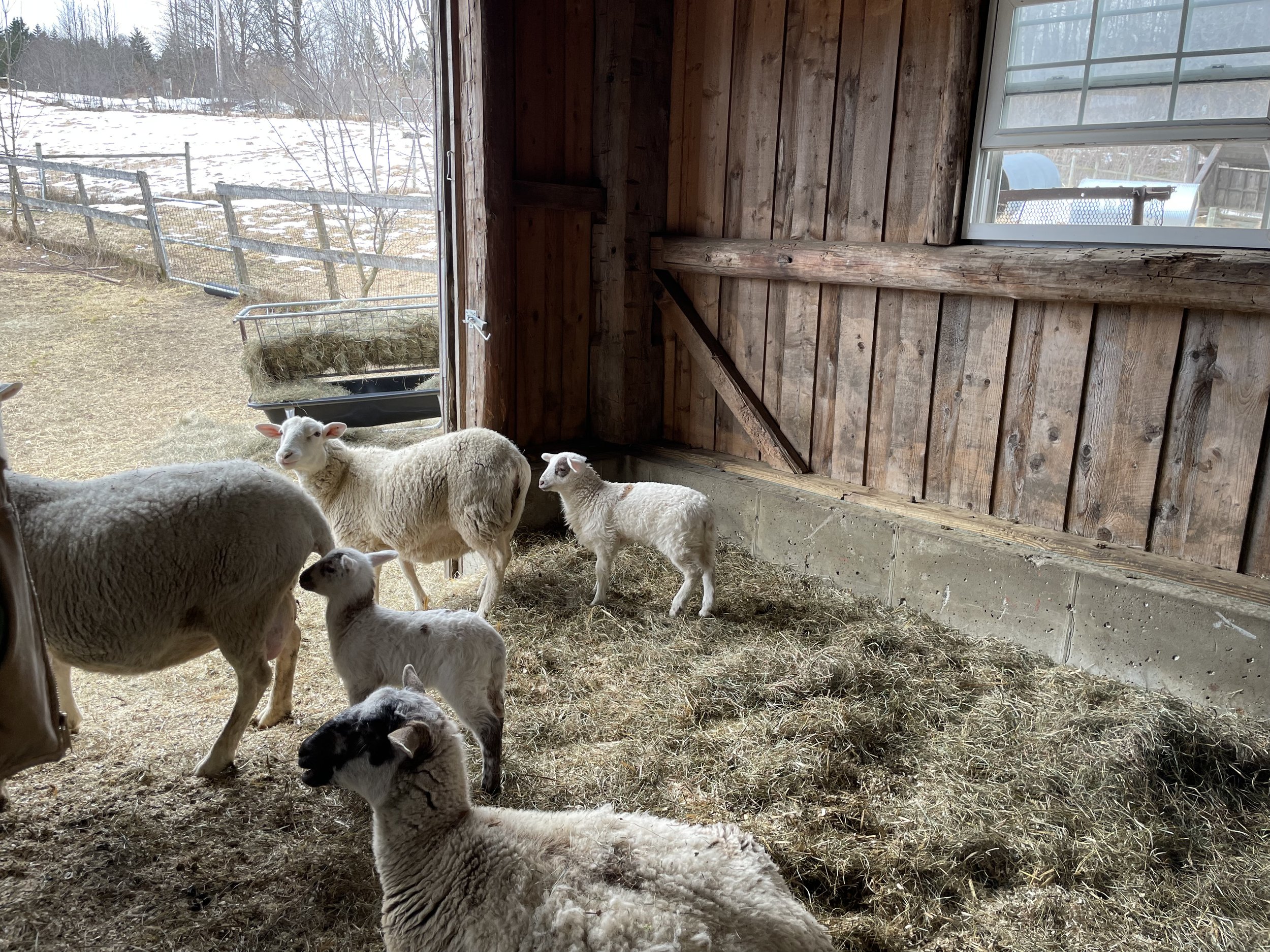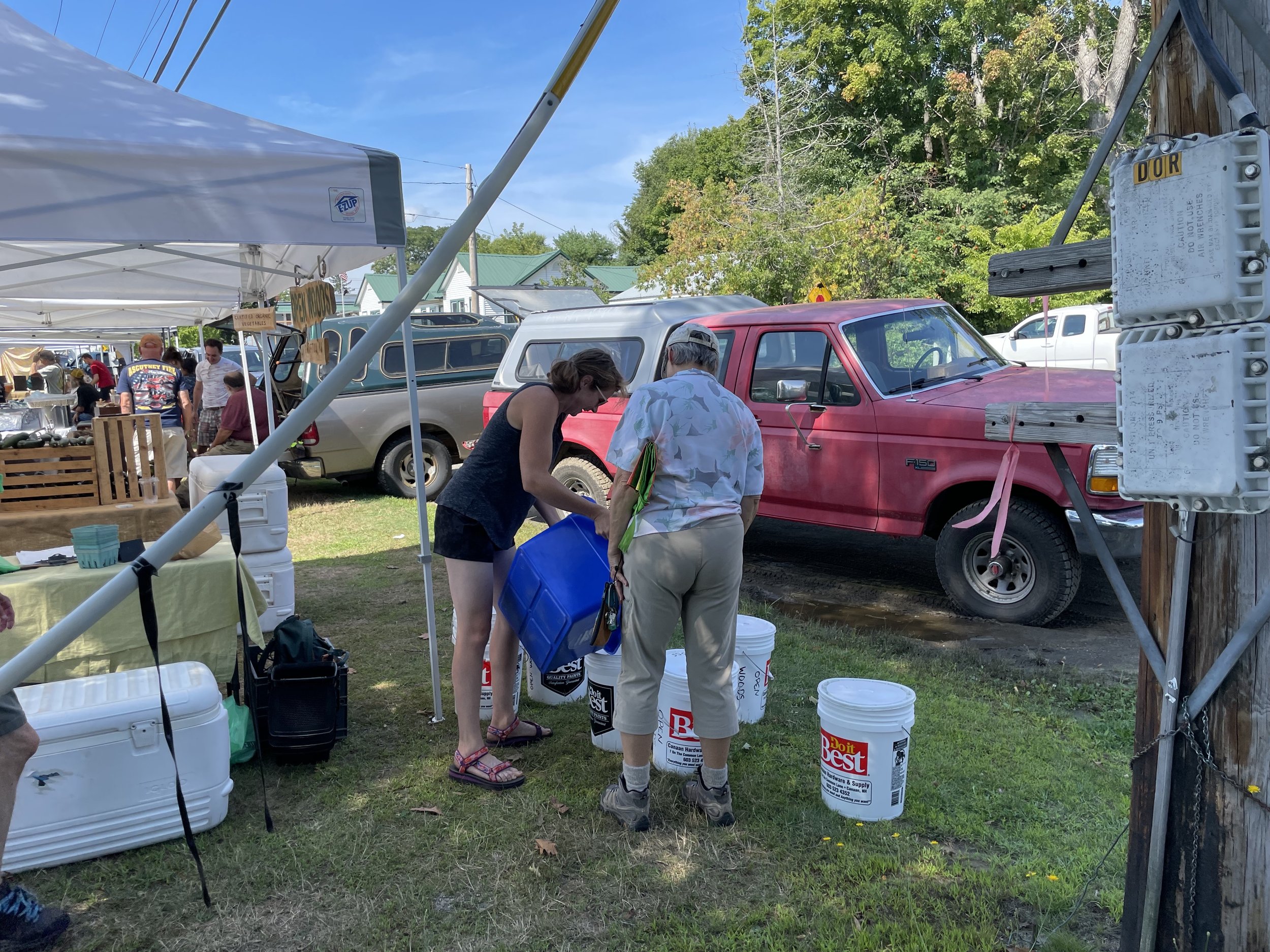The Farmer Toolkit
There are a few ways to get to know the resources in this toolkit. One, work your way through the learning modules, exploring each set of topics with a bit of context. Two, jump to the index and poke around to find the resources you need: tipsheets, worksheets, templates you can adapt for your operation, video tutorials and folders with even more await!
The goal
Turn waste into resource with better soil and nutrient management through composting.

Resources for Farmers
Before You Begin
Get to know the regulations
The regulatory environment for food scrap composting can seem complex and overwhelming at first glance, but understanding what regulations and requirements apply to you before you begin can bring peace of mind down the road. Questions to answer for the type of composting you want to do:
Do you need a permit?
Do you need to file for an exemption?
Are there local zoning restrictions?
Is there a limit to how much off-farm material you can bring onto your farm each year - or how much square footage you can use for active composting?
Are there required setbacks from waterways, property lines, or structures?
Are there fees to pay?
Do you need to be certified as an operator?
The Vermont Food Cycle Coalition produced this guide to the regulatory environment for Vermont farmers composting in collaboration with local community. Check it out!
Map your workflow and choose a compost system
An important early decision is what type of compost system you will use, but it’s equally important to recognize that the system sits within a larger workflow. You want to consider material drop-off and carbon storage, tool storage, access to water, vehicle widths, and more. Use the tools and videos in this section to sketch out your compost workflow based on factors such as the expected volume and whether you manage with human or tractor power. Then, choose a compost system that works best within the workflow you’ve designed. The most common compost systems farmers use are:
3-bin or “bin and bay” systems
Windrow (or pile) systems
In-vessel systems
A combination of two of the above
Brief introductions to other methods, such as vermicomposting and mechanized in-vessel composting, are discussed under Video Learning.
It’s OK - in fact, it’s common to choose one system when you’re starting and then to iterate or evolve into another system as you learn and grow. The most important decision is start! Read more about iterating and evolving in Year 2 & Beyond.
Make community connections
Busy farmers need helpful collaborators.
While community collaborations aren’t necessary, they can be a way to share the work of getting a composting operation off the ground. Tools and videos in this section help you think about what strengths exist in your community, whether those partnerships are right for you, how to engage volunteers when you have them, and how to communicate well with neighbors so they know what’s afoot!
Tool to Try: Asset-Mapping
Asset-mapping can identify strengths, resources, and capacities within a community. It involves creating a visual representation of what you have, what you need, and where to find it. Asset-mapping is a first step to strategizing, or it can be used to think generatively and as broadly as possible about every skill or material needed for a successful composting operation.
Model your management style
Consider how your farm is managed - is it family-run? Do you have employees? Is it a non-profit or community farm? There are many farming models!
While management of your compost program doesn’t necessarily need to match your farming model, there are different considerations to take into account depending on how many people are involved in the active management of your compost program.
Whether you’re managing solo or as a team, as a stable group or a constantly shifting ecosystem of people, we have tools available to help support effective communication.
In addition to communication with your team, remember to set up communication systems with people who bring you their food scraps.
See the section Make community connections (above) to learn more about this, or check out some of the tools in the Community section.
Left: Abby Kilrain at Work Song Farm in Hopkinton, NH; Right: Healthy City Youth Farm, Hunt Middle School, Burlington, VT - Photo credit: Vermont Garden Network
Set goals now to help later
Like looking into regulations, taking time to set goals can be easy to skip over. But investing in goal-setting now can streamline your work later. Tools and videos in this section emphasize setting goals according to “SMARTIE” metrics: specific, measurable, achievable, relevant, time-bound, inclusive, and equitable. For projects big or small, setting goals is a great place to start.
Keep learning
with five more content modules
-

Your First Year
Get to know the basics of composting. Definitions, materials and recipes, principles of good management, and more. Content to get you going and to come back to as you iterate and improve.
-

Year Two and Beyond
Learn to make improvements based on experience. Evaluate your first finished compost and consider how to adapt your system and practices when your farm model changes, or respond to the unexpected.
-

Troubleshooting Tips
Strategies and solutions for head-scratching eventualities, from low temperatures to frozen piles to keeping wildlife out, plus deliberations for more experienced composters, such as whether to add an aeration.
-

Advanced Topics
Specialized content and advanced topics of the trade, including meeting your compost under a microscope and capturing heat through Compost Aeration and Heat Recovery (CAHR) systems.
-

Learning Forum
A forum for any practitioner to pose questions and quandaries for the CAV On-Farm Composting technical team and other experts to address. Find an answer or ask a question to help your on-farm composting get even better.
Not finding what you’re looking for? Search the entire toolkit…
You’ve made a commitment to composting – now get support! Resources in the Organization and Community sections are designed to help your collaborators.







